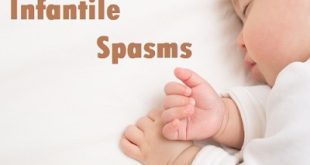Description
Rett syndrome is a neurodevelopmental disorder that affects girls almost exclusively. It is characterized by normal early growth and development followed by a slowing of development, loss of purposeful use of the hands, distinctive hand movements, slowed brain and head growth, problems with walking, seizures, and intellectual disability. Although there’s no cure, early identification and treatment may help girls and families who are affected by Rett syndrome.
Stages of rett syndrome
Stage I
- Stage I, called early-onset stagnation period usually begins when the child is between six and 18 months old. This stage is often overlooked because, in this early part of the child’s life, symptoms of the disorder may not be very noticeable to the parents or the child’s doctor.
- During this stage, the infant may begin to have less eye contact and not be as interested in her toys. Infants may demand less attention or be irritable and restless.
Stage II
- Stage II, or the rapid development regression period, usually begins between ages one and four and may last for weeks or months. Symptoms may appear slowly or rapidly. During this stage, hand skills and expressive language can be lost.
- Certain hand movements that are typical of Rett syndrome, such as wringing, washing, clapping, or tapping, as well as repeatedly moving the hands to the mouth may be seen.
Stage III
- Stage III also called the pseudo-stationary stage, usually begins between ages two and 10 and can last for years. Apraxia (being unable to perform complex movements) and seizures occur often during this stage. Impairments in hand function and hand stereopathies become more evident in this stage.
- However, there may also be an improvement in the child’s behavior, such as less irritability, crying and autistic-like features.
Stage IV
- Stage IV, the last stage, is called the late motor deterioration stage and can last for years or decades. This stage begins when the ability to ambulate ceases. Muscle weakness, rigidity (stiffness), spasticity (uncontrolled muscle activity), dystonia (increased muscle tone with the abnormal posturing of extremity or trunk) and scoliosis (curvature of the spine) are other major features of this stage.
- Hand stereopathies typically become simpler and less intense. However, general eye contact and communication remain intact in stage IV and are important to recognize and utilize for participation.
History
The disorder was identified by Dr. Andreas Rett, an Austrian physician who first described it in a journal article in 1966. It was not until after a second article about the disorder, published in 1983 by Swedish researcher Dr. Bengt Hagberg, that the disorder was generally recognized.
Pathophysiology of rett syndrome
RS is a genetic disorder of neurodevelopmental arrest rather than a progressive process. The gene is located on the X chromosome. Females with a single mutated MECP2 gene are more likely to survive because 1 X chromosome is activated randomly in each cell.
Causes
The major cause is a mutation on the methyl CpG binding protein 2 (MECP2) gene. The gene, found on the X chromosome, typically makes a protein that is critical to normal brain development. The mutation causes the MECP2 gene either to make insufficient amounts of the protein or to make a damaged protein that the body cannot use. As a result, there might not be enough protein for the brain to develop normally.
The severity of RS depends on the percentage of cells that inactivate the X chromosome with the mutated gene. Almost always, the genetic mutation is spontaneous, not inherited. Other than being more common in females, there are no prevalence factors for RS.
Risk factors of rett syndrome
No risk factors for Rett syndrome have been identified, other than being female. The disease-causing gene variation involved in Rett syndrome occurs at random in a child’s DNA.
Symptoms of rett syndrome
Babies with Rett syndrome seem to grow and develop normally at first. Between 3 months and 3 years of age, though, they stop developing and even lose some skills. Symptoms include
- Loss of speech
- Loss of hand movements such as grasping
- Compulsive movements such as hand wringing
- Slowed growth. The brain doesn’t grow properly, and the head is usually small (doctors call this microcephaly).
- Problems with muscles and coordination. This can make walking awkward.
- Balance problems
- Irregular heartbeat. This is a life-threatening problem for many children and adults with Rett syndrome and can result in sudden death.
- Breathing problems
- Abnormal curvature of the spine (scoliosis)
- Behavior problems may include, for example, sudden, odd facial expressions and long bouts of laughter, hand licking, and grasping of hair or clothing.
- Learning problems or intellectual disability
- Loss of communication abilities.
- Other symptoms. A variety of other symptoms can occur, such as thin, fragile bones prone to fractures; small hands and feet that are usually cold; problems with chewing and swallowing; and teeth grinding. Symptoms can vary greatly from child to child.
Metabolic components of Rett syndrome
Diagnosis and Test
A diagnosis of Rett syndrome is based upon identification of characteristic symptoms, a detailed patient history, and a thorough clinical evaluation.
Genetic testing
If your child’s doctor suspects Rett syndrome after evaluation, he or she may recommend a genetic test (DNA analysis) to confirm the diagnosis. The test requires drawing a small amount of blood from a vein in the arm. The blood is then sent to a lab, where technicians examine your child’s DNA for abnormalities and clues as to the cause and severity of the disorder.
Clinical Symptoms
A child must meet the following five necessary criteria to be diagnosed with classic Rett syndrome:2,3
Main Diagnostic Criteria
- A pattern of development, regression, then recovery or stabilization
- Partial or complete loss of purposeful hand skills such as grasping with fingers, reaching for things, or touching things on purpose
- Partial or complete loss of spoken language
- Repetitive hand movements, such as wringing the hands, washing, squeezing, clapping, or rubbing
- Gait abnormalities, including walking on toes or with an unsteady, wide-based, stiff-legged gait
Other Possible Diagnoses
Sometimes Rett syndrome is misdiagnosed as regressive autism, cerebral palsy, or non-specific developmental delays.
For some males, the features of Rett syndrome occur with another genetic condition called Klinefelter syndrome, in which a boy has two X chromosomes and one Y chromosome. This means that the boy may have one mutated MECP2 gene and one normal MECP2 gene, reducing the effects of the mutated gene.
Treatment and Medications
There’s no cure for Rett syndrome, so treatment focuses on managing the symptoms.
As a parent caring for a child with the syndrome, it’s likely you’ll need help and support from a wide range of healthcare professionals.
Your child may benefit from some of the following treatments and aids:
- Speech and language therapy, picture boards, eye gaze technology and other visual aids to help with communication
- Medication for breathing and mobility problems, and anti-epileptic medicine to control seizures
- Physiotherapy, attention to mobility, careful attention to your child’s sitting posture (to minimize the chances of scoliosis developing), and frequent changes in posture
- If scoliosis does become established, a back brace and sometimes spinal surgery may be used to prevent the spine curving further (read more about treating scoliosis)
Caregiver aiding patient with scoliosis
- A high-calorie diet to help maintain sufficient weight, with the use of a feeding tube and other feeding aids if necessary
- Occupational therapy to help develop the skills needed for dressing, feeding and other daily activities
- An ankle-foot orthosis (lower leg brace) to help them walk independently
- A hand splint to help control hand movements, if these are severe (they’re mainly used for limited periods to prevent self-injury or to encourage activities with the other hand)
- Beta-blocker medication or a pacemaker to control their heart rhythm
- Therapeutic horse riding, swimming, hydrotherapy, and music therapy have also been reported to be beneficial. Ask your healthcare team where you can access these therapies.
Advice for caregivers
Caring for a child with Rett syndrome is mentally and physically challenging. Most carers will need social and psychological support.
Your guide to care and support provides lots of information and advice about how you can take time to look after yourself, including:
- Keeping fit and healthy
- Getting a break from caring
- Getting legal support and advocacy
- Taking care of your wellbeing
Prevention of rett syndrome
- Presently, Rett syndrome cannot be prevented. In most cases, the genetic mutation that is responsible for the disorder occurs randomly and spontaneously.
- However, couples who already have a child with Rett syndrome or have another family member who is affected may choose to discuss genetic testing with their doctor.
- In a family who has had a child with Rett syndrome, the probability of having another child with Rett syndrome is very low but mothers should undergo carrier testing since recurrence risk is 50% if the mother is found to be a carrier.
 Diseases Treatments Dictionary This is complete solution to read all diseases treatments Which covers Prevention, Causes, Symptoms, Medical Terms, Drugs, Prescription, Natural Remedies with cures and Treatments. Most of the common diseases were listed in names, split with categories.
Diseases Treatments Dictionary This is complete solution to read all diseases treatments Which covers Prevention, Causes, Symptoms, Medical Terms, Drugs, Prescription, Natural Remedies with cures and Treatments. Most of the common diseases were listed in names, split with categories.







